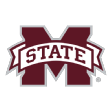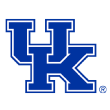ESPN's panel of recruiting experts ranked all 65 Power-5 head coaching jobs by the difficulty of recruiting at each school. Below is a look at the SEC rankings. For the complete 1-65 list, and more on the criteria and tiebreaking procedures for the rankings, click HERE.

1. Georgia Bulldogs: 25 out of 25
Favorable geography/local recruiting territory: 5 -- The Bulldogs do a majority of their recruiting locally, and only have to compete with Georgia Tech for in-state recruits.
Recruiting/football budget: 5 -- $581k, according to the most recent data. Georgia doesn’t have to travel far to land a majority of its recruits. Neighboring states such as South Carolina and Florida have also been very kind to Georgia on the recruiting front.
Facilities to attract recruits: 5 -- Georgia is about to break ground on a new, state-of-the-art $30 million dollar indoor practice facility which will put the Bulldogs on par with other conference powers.
Next-level considerations: 5 -- Georgia has had 33 players selected in the NFL draft since 2010.
Other intangibles: 5 -- Being in a fertile recruiting state is one thing -- having that fertile recruiting state almost all to yourself, when your primary competition is either in a less talent-rich state (Tennessee) or has to share its state with other powerhouses (Florida), is something else. Among Georgia's SEC competitors, Florida and Tennessee have resources and have been improving -- the Gators can point to a division title in 2015 -- but the dynamics of the SEC East give the Bulldogs an extra benefit that make Georgia a powerhouse recruiting job.

2. LSU Tigers: 24 out of 25
Favorable geography/local recruiting territory: 5 -- Since 2013, there have been 66 players from Louisiana ranked in the ESPN 300. The Tigers have no in-state competition for top recruits.
Recruiting/football budget: 5 -- $577k, according to the most recent data. With a ton of in-state talent and not much in-state competition, LSU doesn’t need to travel far to find players.
Facilities to attract recruits: 5 -- Recent stadium expansion put capacity at Tiger Stadium over 100k, and along with the other football buildings such as the indoor practice facility, the Tigers are near the top of the SEC in this area.
Next-level considerations: 5 -- LSU has had 39 players selected in NFL draft since 2010.
Other intangibles: 4 -- LSU has played in two national championship games and won one BCS title under Les Miles, so recent tradition is another mark in the Tigers' favor. That said, The difficulty of navigating the SEC West can have collateral damage on the recruiting trail. Take this year, for example, when losses to a couple of fellow heavyweights in the SEC West led to speculation over Miles' job, and in turn led to a couple of decommitments. Recruiting and competing on a consistently high level is very hard to do in this division.

3. Alabama Crimson Tide: 23 out of 25
Favorable geography/local recruiting territory: 3 -- Since 2013, there have been 43 players from the state of Alabama ranked in the ESPN 300, fewer than Georgia or LSU has in its back yard. What's more, Alabama has to compete with in-state rival Auburn for recruits. Nick Saban's consistently strong recruiting classes have more to do with Nick Saban and his staff than any other factor. Poll 100 coaches not named Saban on whether they'd be more confident of getting players at Georgia, LSU or Alabama, and Bama will finish third in that voting.
Recruiting/football budget: 5 -- $983k, according to the most recent data. Alabama has the financial wherewithal to recruit any prospect in the country.
Facilities to attract recruits: 5 -- The Crimson Tide have a top-notch stadium as well as other top-end facilities such as an indoor practice facility, multiple practice fields and state-of-the-art weight room and training area.
Next-level considerations: 5 -- 44 players taken in the NFL draft since 2010.
Other intangibles: 5 -- Alabama has won multiple SEC and National Championships, and has tradition that is well known by recruits.

4. Florida Gators: 22 out of 25
Favorable geography/local recruiting territory: 4 -- Since 2013, there have been 206 players from the state of Florida ranked in the ESPN 300. The Gators, however, have to compete with Florida State, Miami (FL) and several other top programs including Clemson, Alabama, Auburn and Ohio State for Florida prospects.
Recruiting/football budget: 5 -- $687k according to the most recent data, a very large budget considering the Gators do most of their recruiting in-state, or in neighboring Georgia.
Facilities to attract recruits: 3 -- The Gators have made strides here, and just opened an indoor practice facility, but are still not quite on par with teams such as Alabama, Texas A&M and LSU for top facilities.
Next-level considerations: 5 -- Since 2010, the Gators have had 27 prospects selected in the NFL draft.
Other intangibles: 5 -- Despite the struggles of the Will Muschamp era, Florida has a very strong brand and competes in a division where it's possible to win quickly and gain traction with recruits. Jim McElwain's first season, when he won a division with a far less from perfect team, is proof positive of that.

5. Auburn Tigers: 21 out of 25
Favorable geography/local recruiting territory: 3 -- Since 2013, there have been 43 players from the state of Alabama ranked in the ESPN 300. Alabama also has to compete with in-state rival Alabama for recruits.
Recruiting/football budget: 5 -- $1.3 million according to the most recent data, a huge recruiting budget that allows the Tigers to recruit anywhere in the country.
Facilities to attract recruits: 5 -- With an indoor practice facility and state-of-the-art dorms, Auburn has some of the best facilities in the conference.
Next-level considerations: 4 -- Auburn has had 12 players selected in the NFL draft since 2010.
Other intangibles: 4 -- Two national title game appearances since 2010 have strengthened the Auburn brand, though playing in the SEC West and competing for recruits with Alabama on a yearly basis can be difficult. The tools are in place to be successful, but it's still tough to maintain that success in a difficult division.

6. Texas A&M Aggies: 21 out of 25
Favorable geography/local recruiting territory: 5 -- A total of 3,559 in-state recruits signed with Power 5 schools between 2006 and 2015, and while the Aggies have to compete with numerous other schools for top recruits such as Texas, Baylor, TCU, Texas Tech, Houston, Oklahoma, Oklahoma State, LSU and Nebraska, there is plenty of talent in Texas to go around.
Recruiting/football budget: 4 -- $401k according to the most recent data. While the Aggies don’t have to travel far to find recruits, their recruiting budget is still significantly lower than other schools such as Georgia and Florida, which are in similarly rich recruiting areas.
Facilities to attract recruits: 5 -- This would have been a "3" two years ago, but with the significant recent facility upgrades, the Aggies have made a jump to near the top of the conference.
Next-level considerations: 4 -- The Aggies have had 16 players selected in NFL draft since 2010.
Other intangibles: 3 -- The Aggies are relatively new to the SEC and Texas A&M is located in Big 12 territory. While the fan base is outstanding, some recruits from Texas want to stay in the Big 12 Conference. As mentioned, the SEC West is also a very difficult division in which to sustain momentum.

7. Tennessee Volunteers: 21 out of 25
Favorable geography/local recruiting territory: 3 -- Only 429 in-state players from 2006-2015 have signed with a Power 5 conference school.
Recruiting/football budget: 5 -- Because of the distance Tennessee must go to recruit top players, the Volunteers have one of the highest recruiting budgets in the country.
Facilities to attract recruits: 5 -- Tennessee has made significant facility upgrades over the last 3-7 years, and is on par with the best-of-the-best in the SEC.
Next-level considerations: 4 -- The Volunteers have had 16 players selected in the NFL draft since 2010, though none were selected in the 2015 draft.
Other intangibles: 4 -- Tennessee has a lot of tradition, a huge fan base and has won national titles, but its location can be difficult for consistently recruiting at the top level. The Vols have maintained a strong brand despite not being an elite team since Phil Fulmer stepped down as head coach in 2008.

8. Ole Miss Rebels: 18 out of 25
Favorable geography/local recruiting territory: 3 -- The state of Mississippi has produced 429 prospects that have signed with Power 5 conference schools since 2006. The Rebels also have to compete with in-state rival Mississippi State for top recruits.
Recruiting/football budget: 5 -- $557k according to the latest data, which was right on par with other top SEC schools.
Facilities to attract recruits: 4 -- Ole Miss has a stadium upgrade planned and the other facilities are updated and high-quality.
Next-level considerations: 3 -- There have been eight players selected in NFL draft since 2010. This number is likely to increase significantly in the next few years with players like Robert Nkemdiche, Laremy Tunsil, Tony Conner and Laquon Treadwell on the roster.
Other intangibles: 3 -- Head coach Hugh Freeze has shown it’s possible to recruit elite talent to Oxford. However, competing in the SEC West for recruits, and on the field will always be a challenge no matter who the coach is.

9. Arkansas Razorbacks: 18 out of 25
Favorable geography/local recruiting territory: 2 -- Since 2013, there have been a total of 10 recruits from Arkansas in the ESPN 300.
Recruiting/football budget: 5 -- $615k according to the most recent data, which is for the most part equal with other SEC programs.
Facilities to attract recruits: 3 -- Arkansas has solid facilities that are on par with pretty much the rest of the SEC.
Next-level considerations: 5 -- The Razorbacks have had 21 players selected in the NFL draft since 2010.
Other intangibles: 3 -- Arkansas joined the SEC in 1990, and while the Razorbacks have played in the SEC championship game twice (2002, 2006) and have more or less been a fixture of bowl season, they have never won the conference title. A lack of a consistent, winning tradition can play a role on the recruiting trail.

10. Mississippi State Bulldogs: 18 out of 25
Favorable geography/local recruiting territory: 3 -- The state of Mississippi has produced 429 prospects who have signed with Power 5 conference schools since 2006. The Rebels also have to compete with in-state rival Ole Miss for top recruits.
Recruiting/football budget: 4 -- $477k according to the most recent data. In-state rival Ole Miss spent nearly 100k more on recruiting in 2013, the last year for which data is available.
Facilities to attract recruits: 3 -- Mississippi State has a nice stadium and facilities, but is not on the same level in that realm as Alabama, LSU, Texas A&M or Tennessee.
Next-level considerations: 5 -- 18 players selected in the NFL draft since 2010, more than twice as many as Ole Miss over that span and more than Tennessee, Texas A&M and Auburn as well.
Other intangibles: 3 -- Dan Mullen has shown that it's possible to have Mississippi State in the title conversation, but it’s still a very difficult task competing with teams like Auburn, LSU and Alabama both on the field and the recruiting trail every year. Combine that with the fact that Ole Miss is on the rise as well and it can be a difficult place to consistently attract the type of talent you need to win.

11. South Carolina Gamecocks: 16 out of 25
Favorable geography/local recruiting territory: 3 -- The state of South Carolina has produced 442 Power 5 conference signees since 2006. The Gamecocks, however, have to compete with in-state power Clemson and schools from neighboring states, like North Carolina and Georgia, for recruits.
Recruiting/football budget: 2 -- $302k according to the latest data. South Carolina’s recruiting budget is much higher than it was before Steve Spurrier arrived, but it’s still significantly lower than several other SEC programs.
Facilities to attract recruits: 3 -- While Williams-Brice Stadium has a great gameday atmosphere and there is a new indoor practice facility, there is still a great need for improvement in other areas of their football facilities.
Next-level considerations: 5 -- South Carolina has produced 22 NFL draft picks since 2010.
Other intangibles: 3 -- While Steve Spurrier dramatically improved the status of South Carolina, the Gamecocks have never won an SEC or national title, and in-state rival Clemson continues to overshadow what South Carolina has done.

12. Missouri Tigers: 16 out of 25
Favorable geography/local recruiting territory: 2 -- while not a great area to recruit, Missouri has been able to land local five-star prospects Dorial Green-Beckham and Terry Beckner Jr. recently.
Recruiting/football budget: 4 -- $631k according to the most recent data. Though Missouri’s budget is certainly on par with other schools, the Tigers have to travel farther than any other school in the conference to get the recruits they need to stay competitive.
Facilities to attract recruits: 3 -- While most of Missouri’s football facilities are pretty good, antiquated Memorial Stadium is not on par with other SEC facilities.
Next-level considerations: 4 -- Missouri has had 16 players selected in the NFL draft since 2010.
Other intangibles: 3 -- While not in the traditional SEC footprint, Missouri has had to travel to states like Florida, Georgia and Texas to land some of its top prospects. Despite winning the SEC East in 2013 and 2014 and establishing the program on the conference map, the Tigers never really saw much of a spike in their recruiting efforts.

13. Kentucky Wildcats: 13 out of 25
Favorable geography/local recruiting territory: 1 -- The state of Kentucky has only produced 174 Power 5 conference signees since 2006.
Recruiting/football budget: 4 -- $504k, according to the most recent data. Kentucky has done a nice job of recruiting in Ohio and Florida. Despite the lack of on-field success, the Wildcats are spending the money to go find recruits.
Facilities to attract recruits: 3 -- Kentucky is making tremendous strides with stadium renovations and new football facilities, but trails everyone but Vandy and Ole Miss in terms of SEC stadium size (62,093). In some cases there is a 40,000 seat or more difference between Commonwealth Stadium and other stadiums in the SEC. The size of the stadium (and by extension fan base) matters to many recruits.
Next-level considerations: 3 -- Kentucky has had 10 players selected in the NFL draft since 2010.
Other intangibles: 2 -- While Kentucky has made significant progress in many areas under Mark Stoops, there isn’t a history of greatness that recruits will recognize. Many recruits also view the Wildcats as a “basketball school,” which can hurt in terms of perception.

14. Vanderbilt Commodores: 12 out of 25
Favorable geography/local recruiting territory: 2 -- The state of Tennessee has produced 429 players who have signed with a Power 5 school since 2006. Vanderbilt also has to compete with in-state giant, Tennessee for recruits.
Recruiting/football budget: 2 -- Since Vandy is a private school, its recruiting budget numbers aren’t made public. The Commodores, however, appear to be very frugal with spending and it's considered unlikely that they are on par with other SEC schools in terms of recruiting budget.
Facilities to attract recruits: 2 -- A small, outdated stadium overshadows Vanderbilt’s quality, indoor practice facility.
Next-level considerations: 4 -- The Commodores have had nine players selected in the NFL draft since 2010, and having a high-profile, first-round NFL quarterback (Jay Cutler) shows recruits that you can get to the league from here.
Other intangibles: 2 -- Vanderbilt’s high academic standards limit who the Commodores can target on the recruiting trail.
